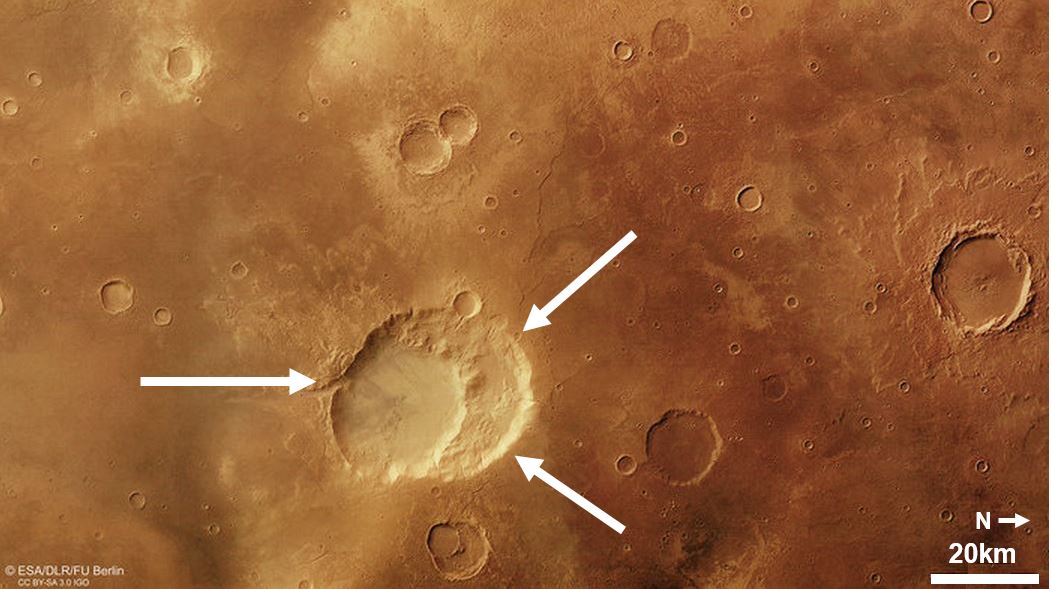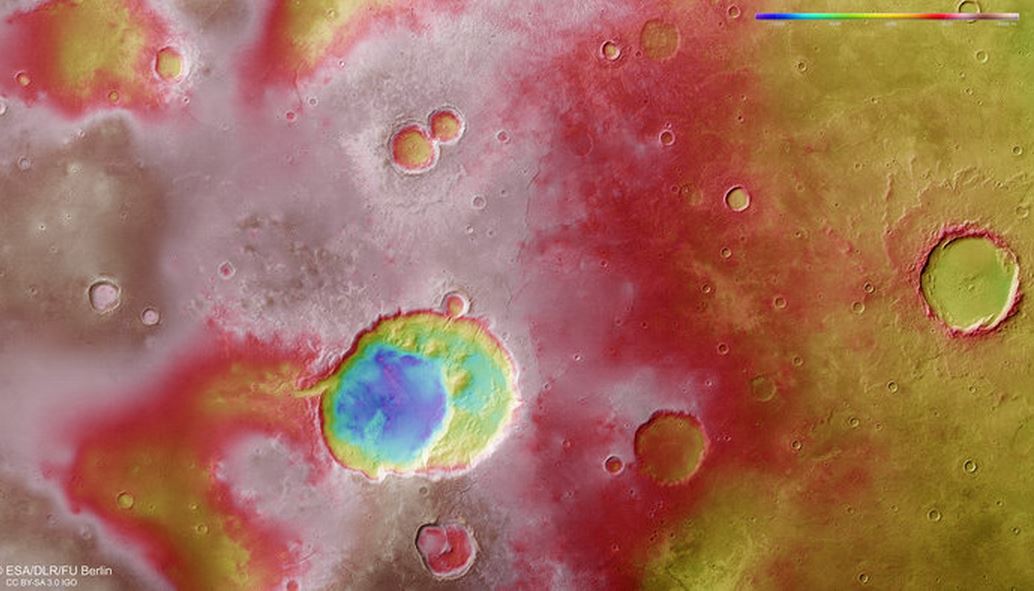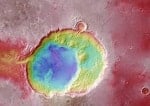European Space Agency scientists say they have identified what is probably an ancient Mars supervolcano, whose crater measures 40km by 30km and dips as low as 1,750 metres at its deepest point – the Red Planet’s equivalent of Earth’s Yellowstone Caldera, they say.
At first glance, the Mars Express image looks to be pockmarked with a several impact craters. However, the largest structure among them is probably the remains of an ancient supervolcano.
The images released by the European Space Agency (ESA) were taken on 26 November, 2014, by the high-resolution stereo camera on Mars Express, ESA’s first mission to explore the Red Planet. The images focus on the Sileo Patera feature in the Arabia Terra region of Mars.

Was Sileo Patera a supervolcano?
Some researchers think that Sileo Patera and several similar features in Arabia Terra are calderas. A caldera is a big volcanic crater, especially one formed by a huge eruption which led to the collapse of the mouth of the volcano, which in this case would have been Martian supercolvanoes.
On our planet, a supervolcano is one that can produce at least 1000 cubic kilometres of volcanic materials in one eruption. This is thousands of times greater than what a ‘normal’ volcano would spew out, and powerful enough to alter the climate of the whole planet. The Yellowstone Caldera in the US is an example of one on Earth.
Supervolcanoes occur after magma (hot fluid or semi-fluid material below or within the earth’s crust) is trapped below the surface, resulting in a massive buildup in pressure. They suddenly erupt in extremely-violent explosions and thus to not ‘grow’ sloping mountains like Olympus Mons.
Calderas are hard to identify, especially millions and even billions of years later.
Scientists have detected several irregularly shaped craters in the Arabia Terra region of Mars that may represent a family of ancient supervolcano calderas.
Sileo Patera has two depressions with steep-sided walls, low topographic relief and collapse features. “The two depressions could even represent two different eruptive episodes due to collapse as the underlying magma pressure was released, or as the magma chamber migrated below the surface,” says ESA.

Impact craters have different features
Impact craters are different. They include features such as a central peak, crater rims than stand high up, and ejecta blankets surrounding them.
Regarding the latest images, ESA wrote:
“Indeed, impact craters are widespread in this scene: textbook examples can be found in the two side-by-side craters just above Siloe Patera, and in the large crater at the far right of the scene. These craters each exhibit a central peak, terraced crater walls and a surrounding ejecta blanket.”
“An impact crater with depth to diameter ratio comparable to Siloe Patera would be expected to show these features – unless perhaps the crater had undergone extensive erosion or modification – but it does not.”
The images show several small channels and gullies at Siloe Patera, cut into the walls and partly flowing into the depression. In the foreground there is a valley-like feature, which on one side cuts into the depression.
The valley, along with several other small channels in the immediate area, appears to cut through the material to the lower left of the craters – this could be either ejecta from an impact or lava flow.

Scientists already know that Arabia Terra contains fine-grained, layered sulphate- (US: sulfate-) and clay-bearing materials. These could have come from lava and dust from eruptions.
In order to be certain, further studies are required, the researchers said, including in situ sampling.
This is a topic of great interest for the scientific community, given that the gases released in supervolcano eruptions probably had a major impact on Mars’ climate.

